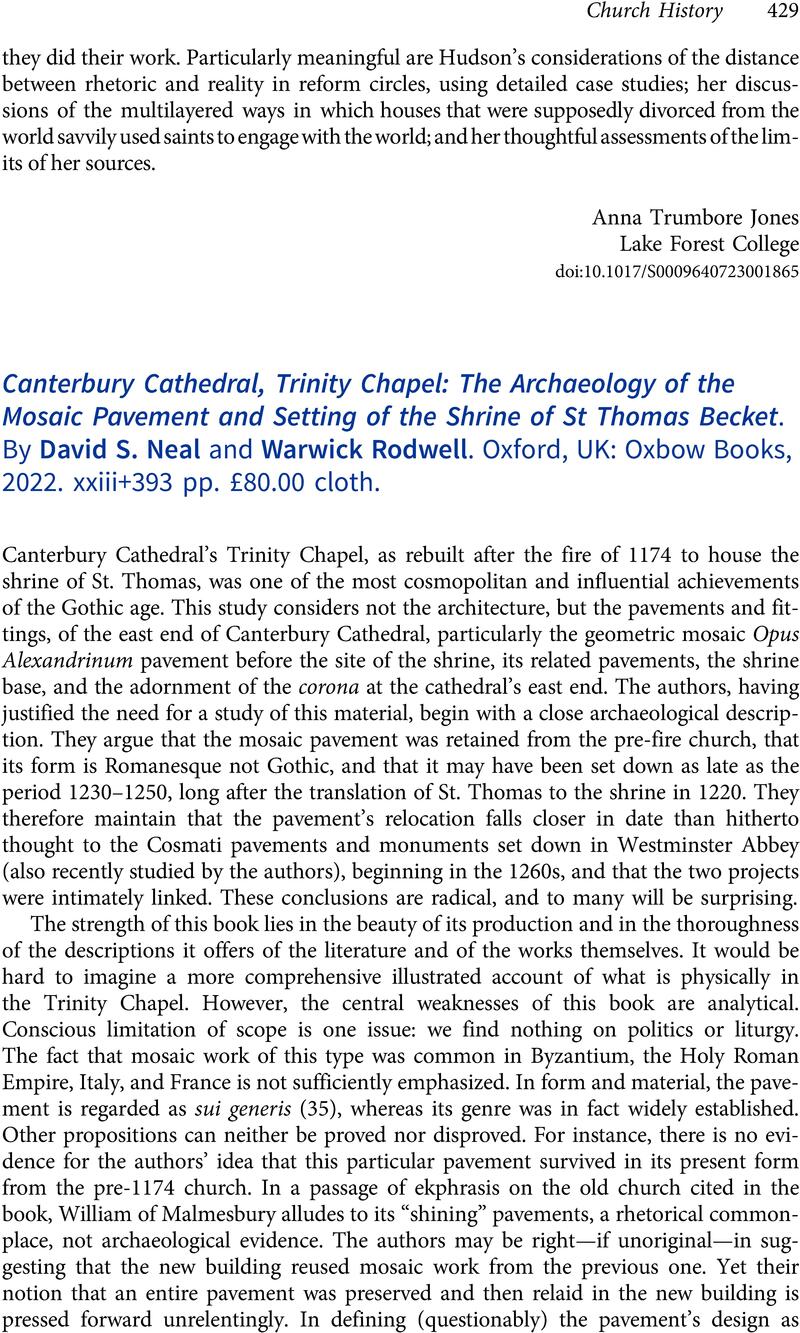No CrossRef data available.
Article contents
Canterbury Cathedral, Trinity Chapel: The Archaeology of the Mosaic Pavement and Setting of the Shrine of St Thomas Becket. By David S. Neal and Warwick Rodwell. Oxford, UK: Oxbow Books, 2022. xxiii+393 pp. £80.00 cloth.
Review products
Canterbury Cathedral, Trinity Chapel: The Archaeology of the Mosaic Pavement and Setting of the Shrine of St Thomas Becket. By David S. Neal and Warwick Rodwell. Oxford, UK: Oxbow Books, 2022. xxiii+393 pp. £80.00 cloth.
Published online by Cambridge University Press: 02 October 2023
Abstract
An abstract is not available for this content so a preview has been provided. Please use the Get access link above for information on how to access this content.

- Type
- Book Reviews and Notes
- Information
- Copyright
- Copyright © The Author(s), 2023. Published by Cambridge University Press on behalf of American Society of Church History


